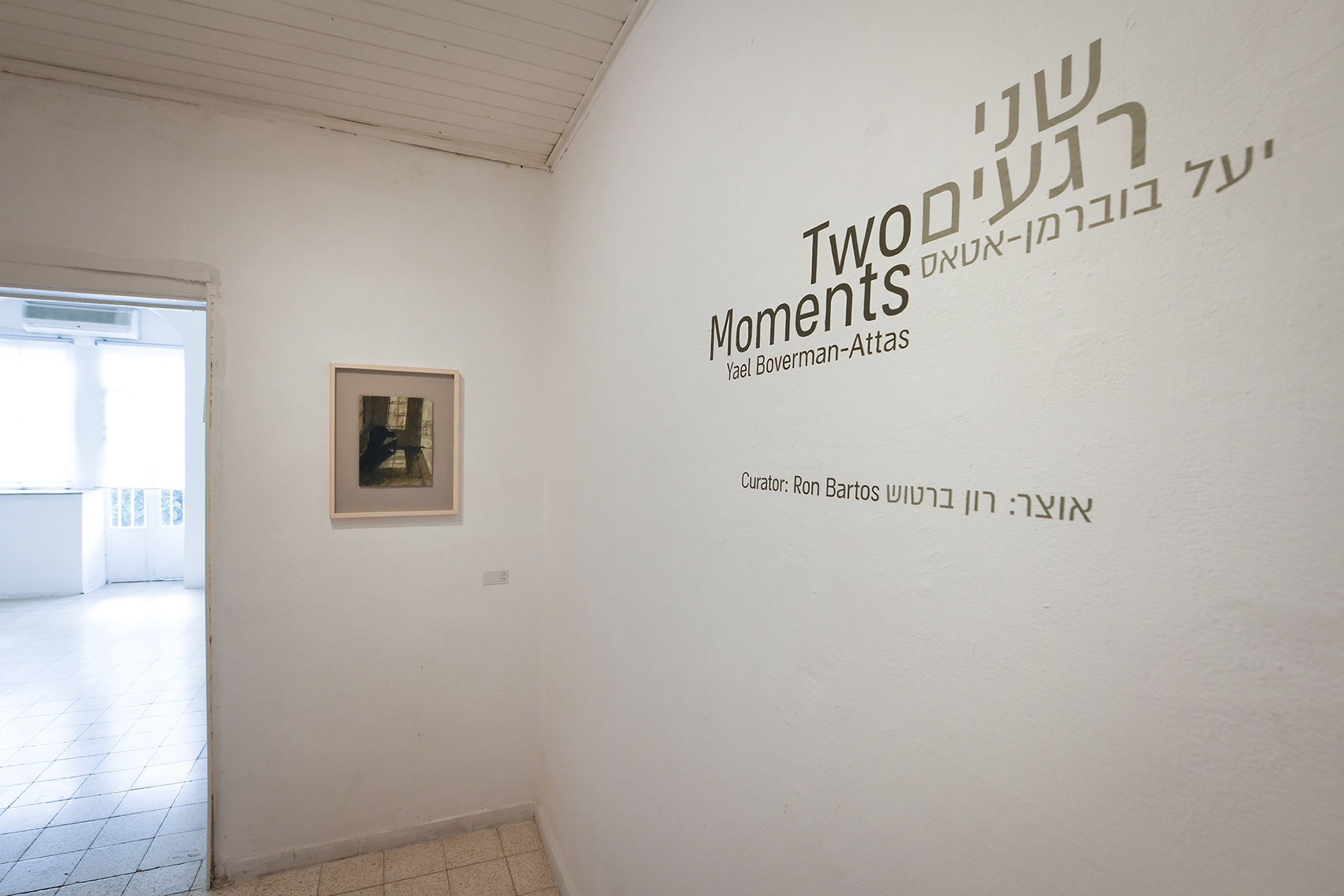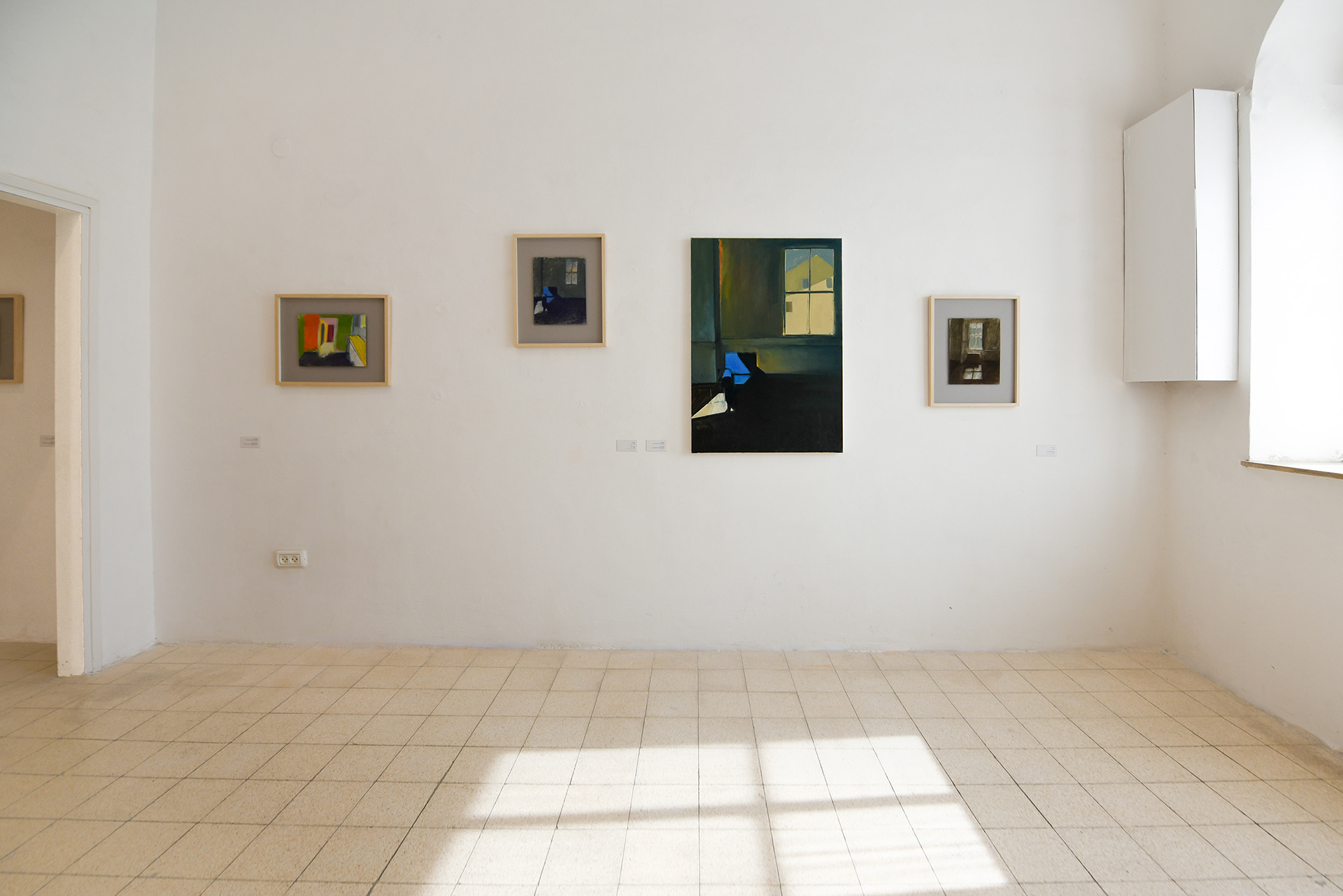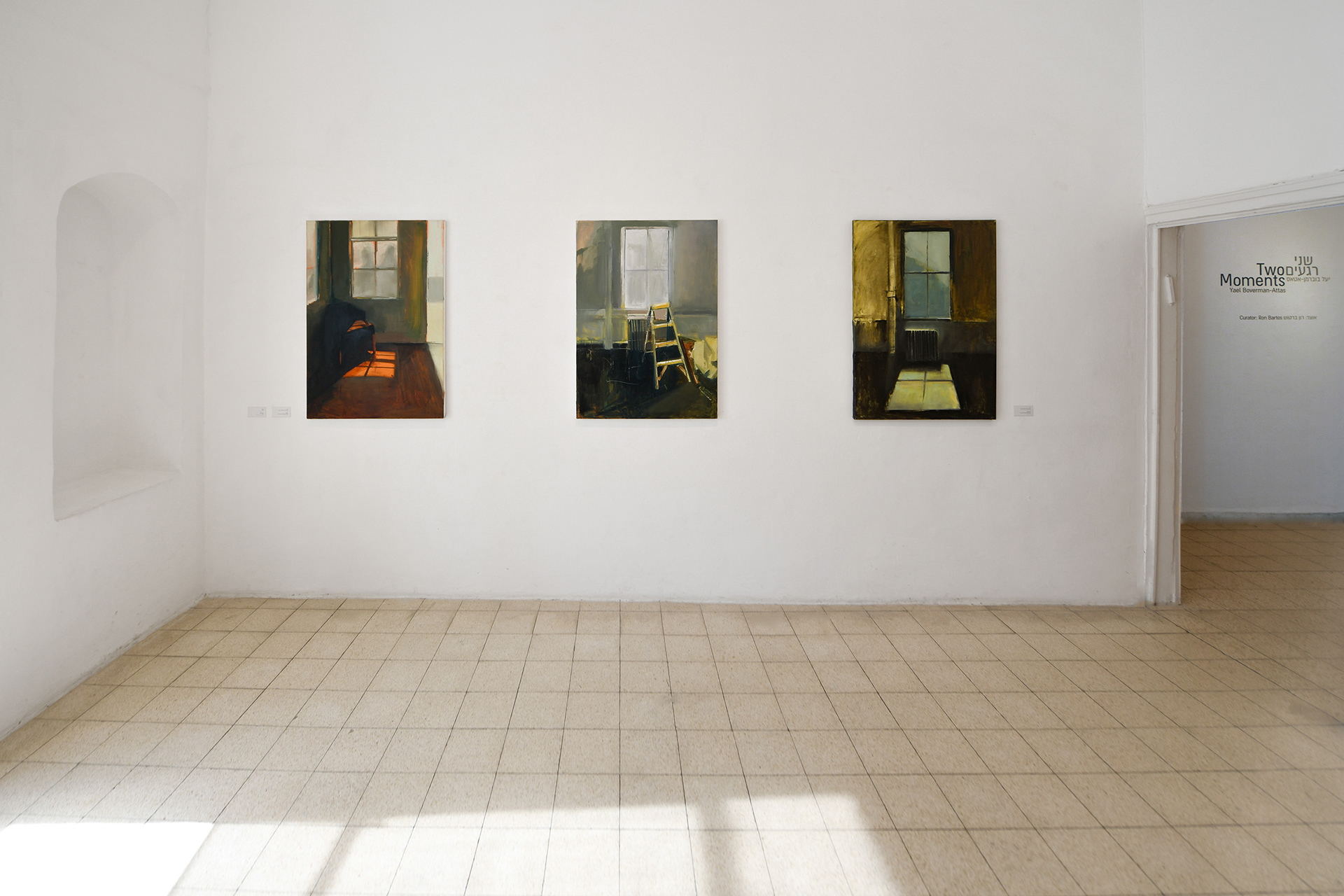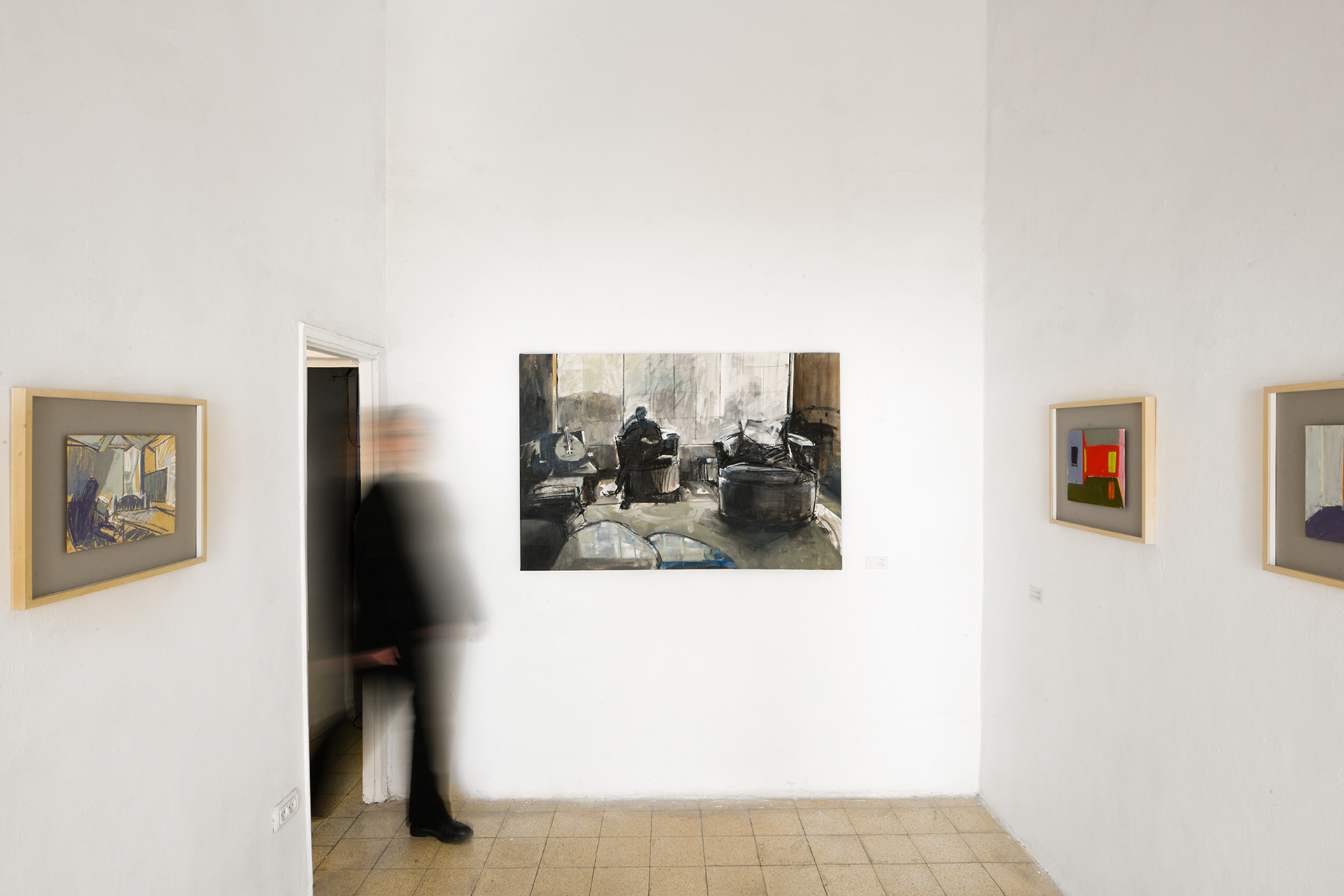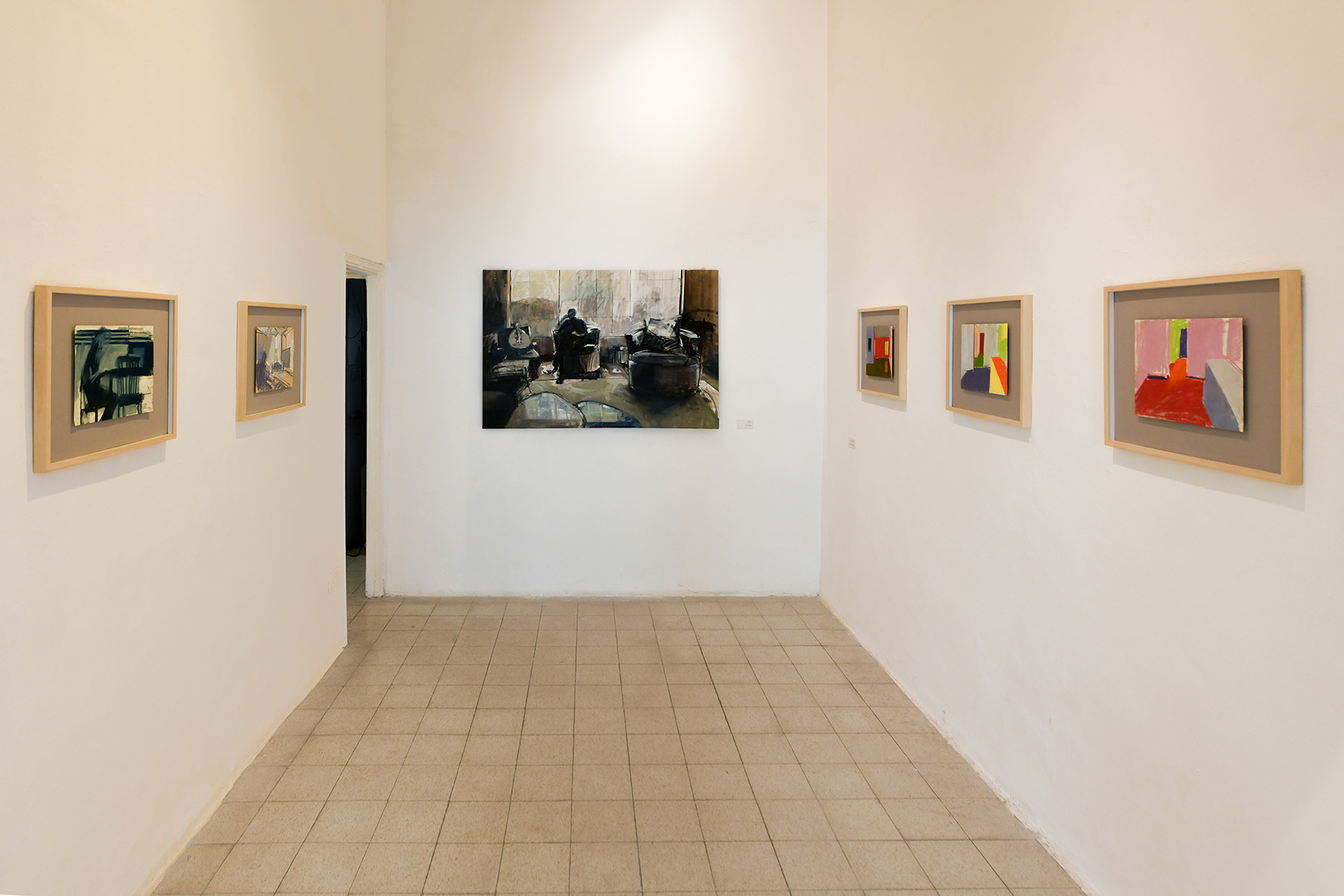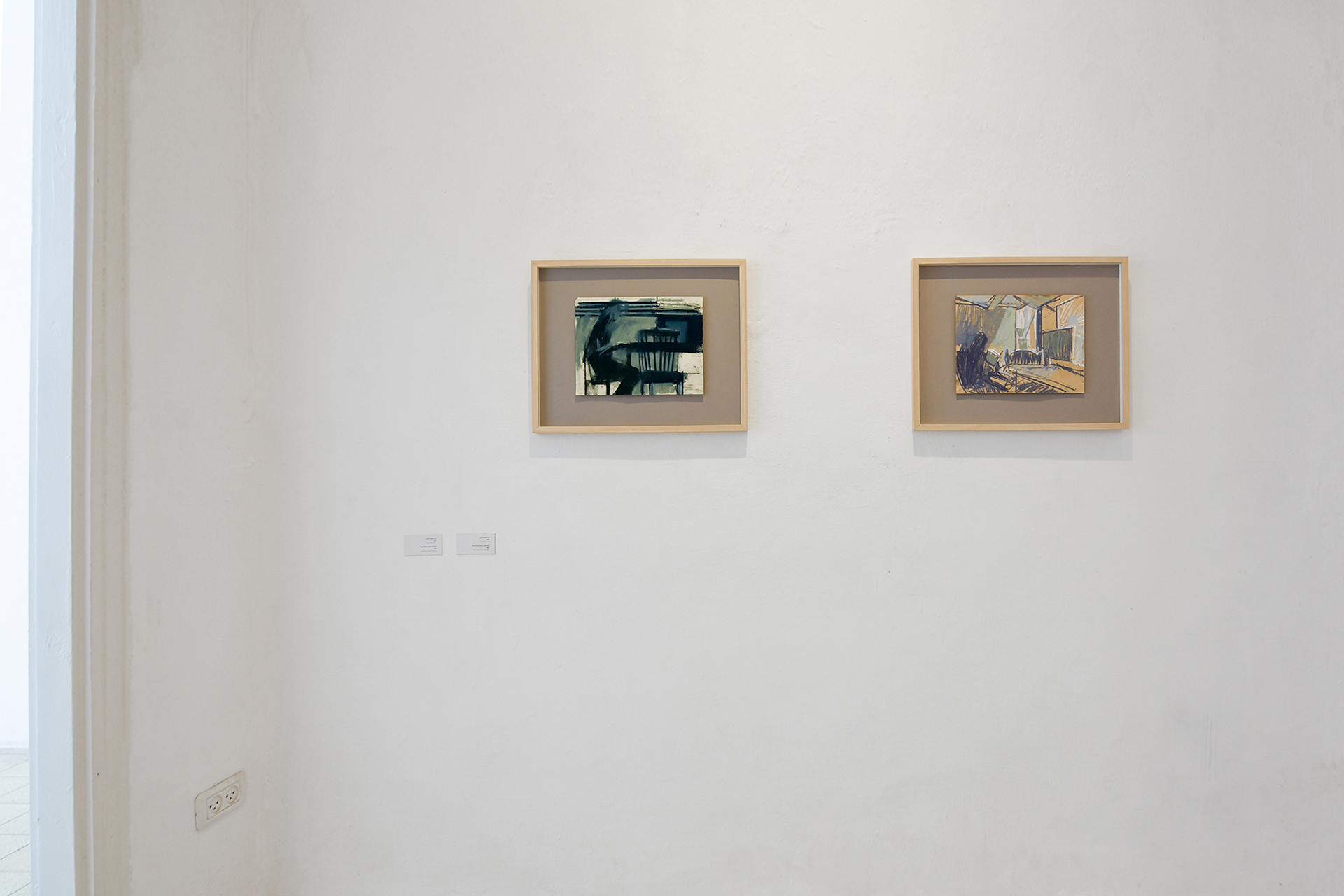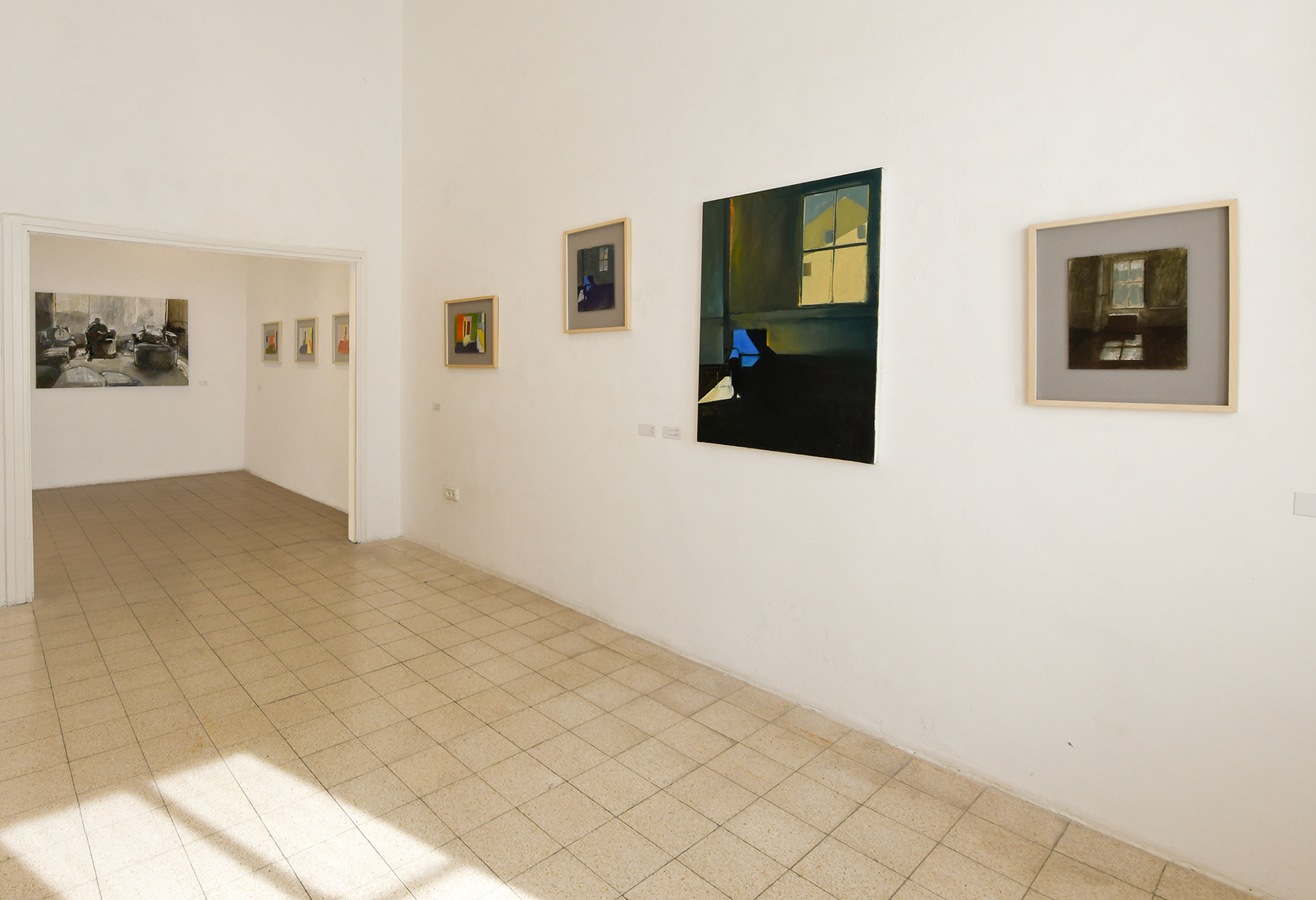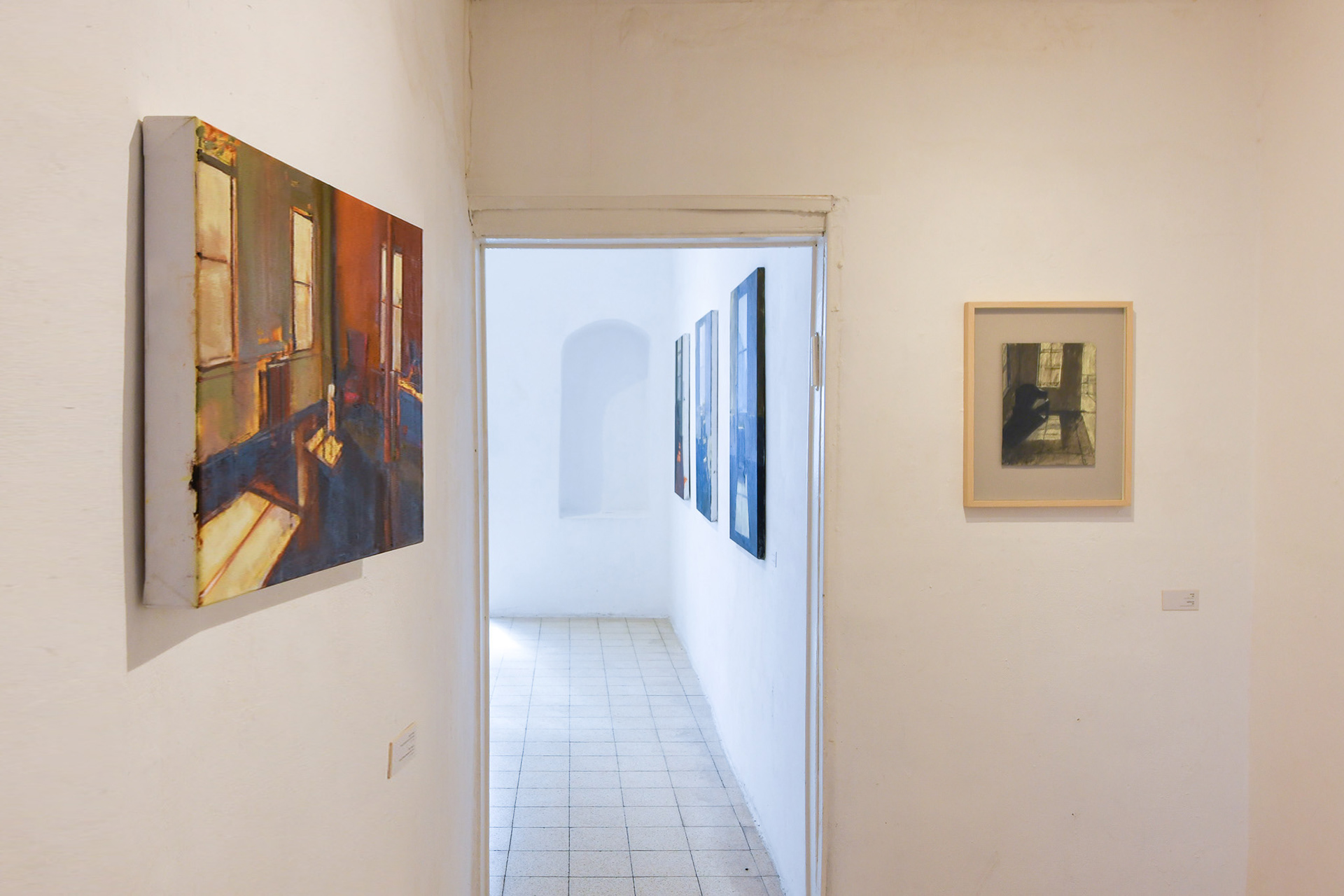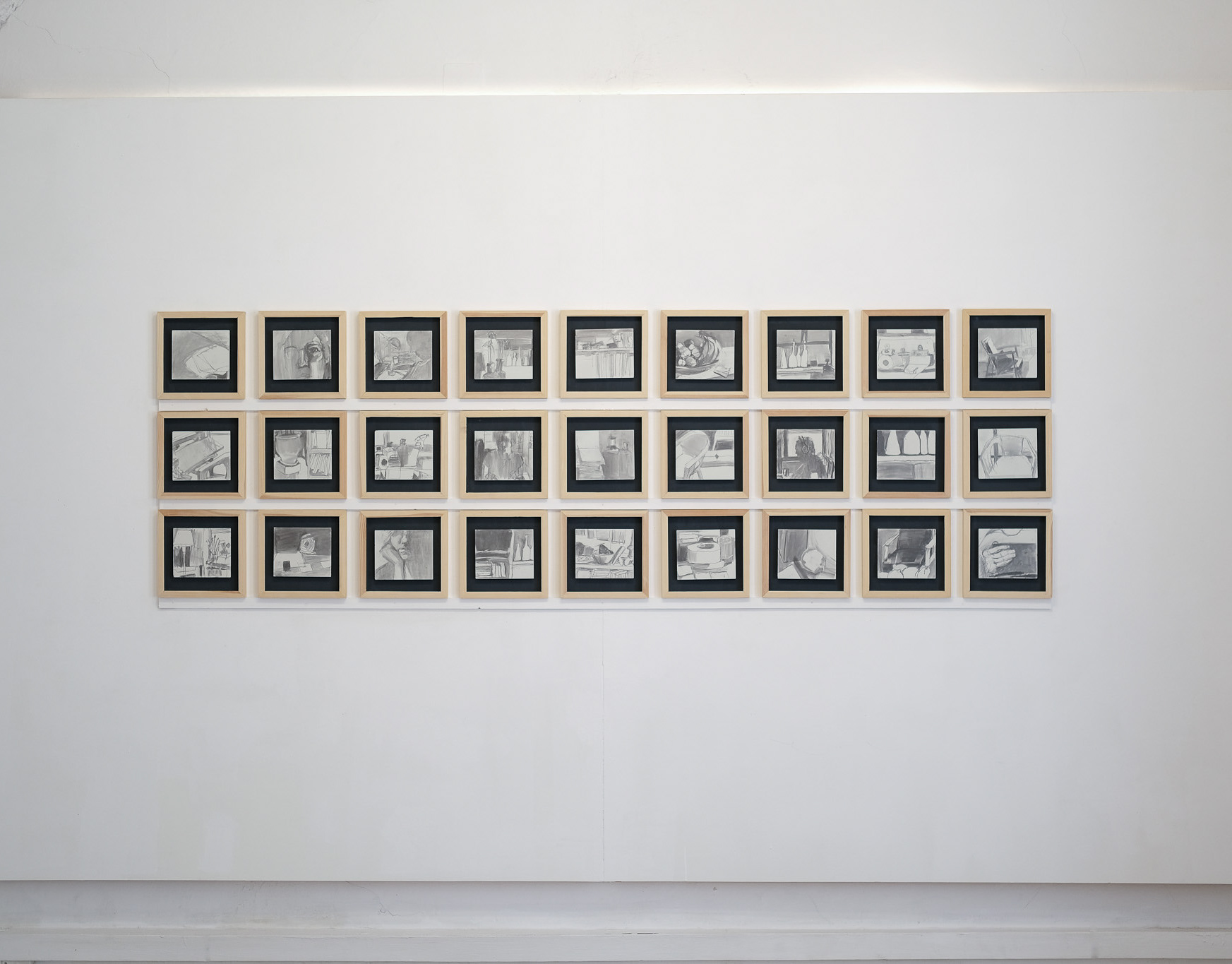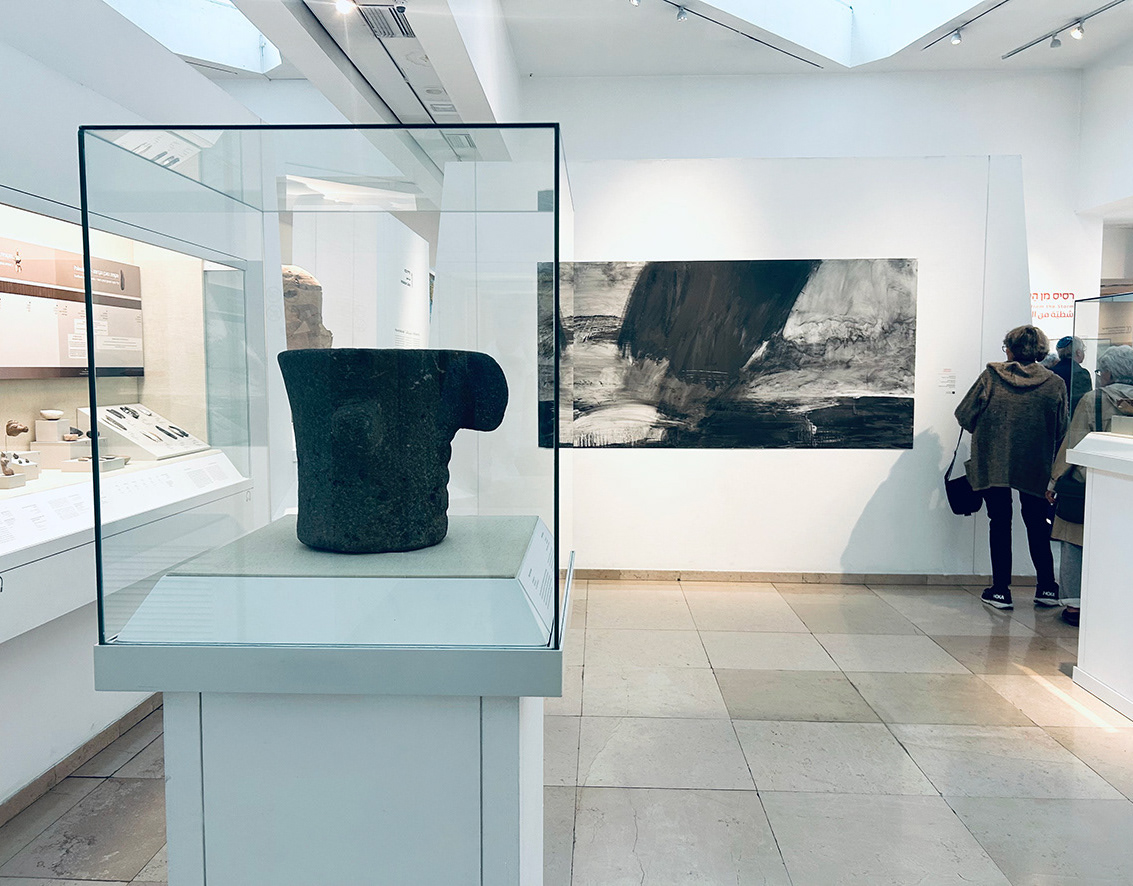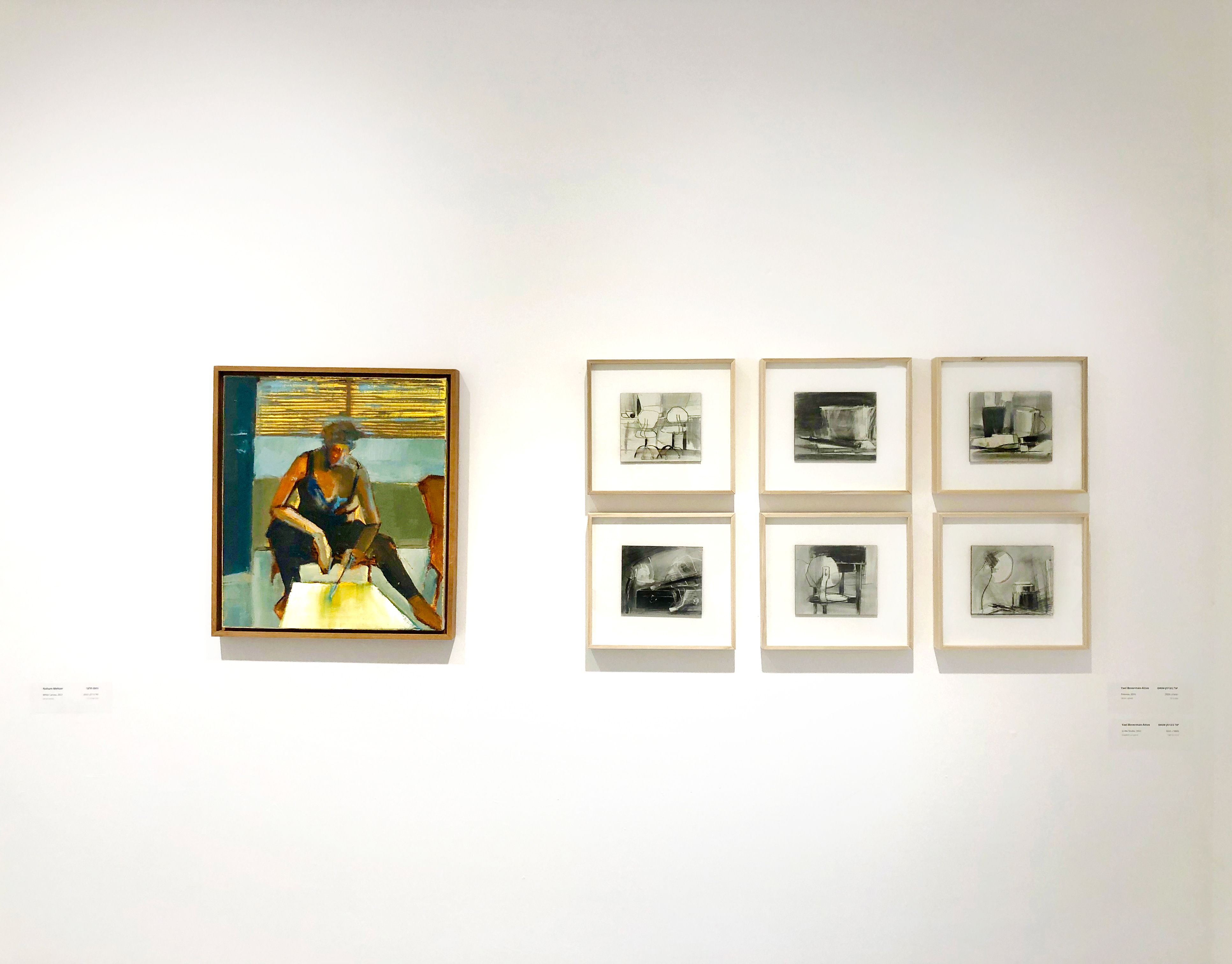Two Moments | Solo exhibition
Curator: Ron Bartos
Curator: Ron Bartos
December 2022
Yael Boverman-Attas’s new exhibition is comprised of two moments, two durations, two beats. These are such prosaic moments that, had they not caught the painter’s eyes, and had the painter not captured them in her paintings, they would have passed without a trace. A room with a window is a moment. An empty chair is a moment. An empty room being filled is a moment - and that is the second moment in the exhibition.
The exhibition is referring to “moments,” as if the painter is reaching out to her audience asking for “One moment, silence, please,” the same way that Natan Zach did in his poem “One Moment.”
This is call for attention, to stop, look, and listen not only to the minutiae but to the very appeal, the request to pay attention to what is being said-painted, and to the person making the appeal. This is an everyday call, which, as in Zach’s poem, continues in intimate, measured, enigmatic, and even mystical painting.
The exhibition is referring to “moments,” as if the painter is reaching out to her audience asking for “One moment, silence, please,” the same way that Natan Zach did in his poem “One Moment.”
This is call for attention, to stop, look, and listen not only to the minutiae but to the very appeal, the request to pay attention to what is being said-painted, and to the person making the appeal. This is an everyday call, which, as in Zach’s poem, continues in intimate, measured, enigmatic, and even mystical painting.
First moment: Interiors
Paintings from three different series make up this section of the exhibition: “California Windows”, which began during an artist residency in Berkeley, inspired by the tradition of the Bay Area Figurative School; “Icelandic Windows”, created following a trip to Iceland, made in the spirit of Vermeer’s painterly illumination; and vibrant drawings from the series “Silence in Three Languages”, depicting the painter’s parents’ house, her empty childhood home.
The interiors share a fixed element: each has a rectangle-window. The painted rectangle resonates the rectangular format of the painting itself, organizing the overall surrounding connections. Furthermore, the window is not depicted only in its place but also through its projection, a representation of the light penetrating into the interior through the window – a fertile platform for populating the “empty” space and expressing the artist’s painterly skills.
Another constant is the emptiness: actually there is no real “emptiness” in these paintings since the work of painting an object or background, for example, is still the same act of painting, and the painterly task demanded by the depiction of a window is identical to the task required by the painting of the projection of the window. Thus what is constant here is not the void but the perception of the void, since the room is empty of the person whose room it is. This is emptiness that remembers an elusive presence through its absence, as in Zach’s phrase “empty as a bird,” in that same poem.
Paintings from three different series make up this section of the exhibition: “California Windows”, which began during an artist residency in Berkeley, inspired by the tradition of the Bay Area Figurative School; “Icelandic Windows”, created following a trip to Iceland, made in the spirit of Vermeer’s painterly illumination; and vibrant drawings from the series “Silence in Three Languages”, depicting the painter’s parents’ house, her empty childhood home.
The interiors share a fixed element: each has a rectangle-window. The painted rectangle resonates the rectangular format of the painting itself, organizing the overall surrounding connections. Furthermore, the window is not depicted only in its place but also through its projection, a representation of the light penetrating into the interior through the window – a fertile platform for populating the “empty” space and expressing the artist’s painterly skills.
Another constant is the emptiness: actually there is no real “emptiness” in these paintings since the work of painting an object or background, for example, is still the same act of painting, and the painterly task demanded by the depiction of a window is identical to the task required by the painting of the projection of the window. Thus what is constant here is not the void but the perception of the void, since the room is empty of the person whose room it is. This is emptiness that remembers an elusive presence through its absence, as in Zach’s phrase “empty as a bird,” in that same poem.
Second moment: The Philosopher
The paintings and drawings of “The Philosopher” depict the painter’s life partner - a professor of philosophy – and result from a shared silence: the philosopher is deep in contemplation, reading, or writing, while the painter is involved in painting the close, stable model. Should we want to pinpoint the transition between the exhibition’s two moments, we need only compare and contrast “Interior” with “Interior with a Philosopher”, thus emphasizing the fullness, presence, warmth, and intimacy of the second moment. However, the constants are still here: the rectangle-window is present, the empty chair remains.
Boverman-Attas’s paintings reaffirm the presence of the emptiness (despite the philosopher having entered the room) not as lacking, but as “being” that the painting can grasp. This beingness is a silent frequency, delicate and invisible; it is a shade of atmosphere, the ambience of an interior. It is also something bounded in the painting but located outside of its boundaries; the couple remains jointly and severally in the room during a time of concentration and creative work. But the philosopher is not there - he is inside his writings; the painter is not there but is inside her painting. Nevertheless, we shall say “Interior with Philosopher and Painter”.
The paintings and drawings of “The Philosopher” depict the painter’s life partner - a professor of philosophy – and result from a shared silence: the philosopher is deep in contemplation, reading, or writing, while the painter is involved in painting the close, stable model. Should we want to pinpoint the transition between the exhibition’s two moments, we need only compare and contrast “Interior” with “Interior with a Philosopher”, thus emphasizing the fullness, presence, warmth, and intimacy of the second moment. However, the constants are still here: the rectangle-window is present, the empty chair remains.
Boverman-Attas’s paintings reaffirm the presence of the emptiness (despite the philosopher having entered the room) not as lacking, but as “being” that the painting can grasp. This beingness is a silent frequency, delicate and invisible; it is a shade of atmosphere, the ambience of an interior. It is also something bounded in the painting but located outside of its boundaries; the couple remains jointly and severally in the room during a time of concentration and creative work. But the philosopher is not there - he is inside his writings; the painter is not there but is inside her painting. Nevertheless, we shall say “Interior with Philosopher and Painter”.
